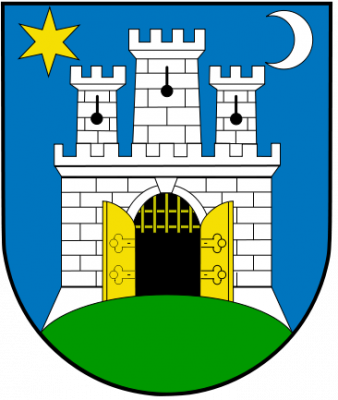
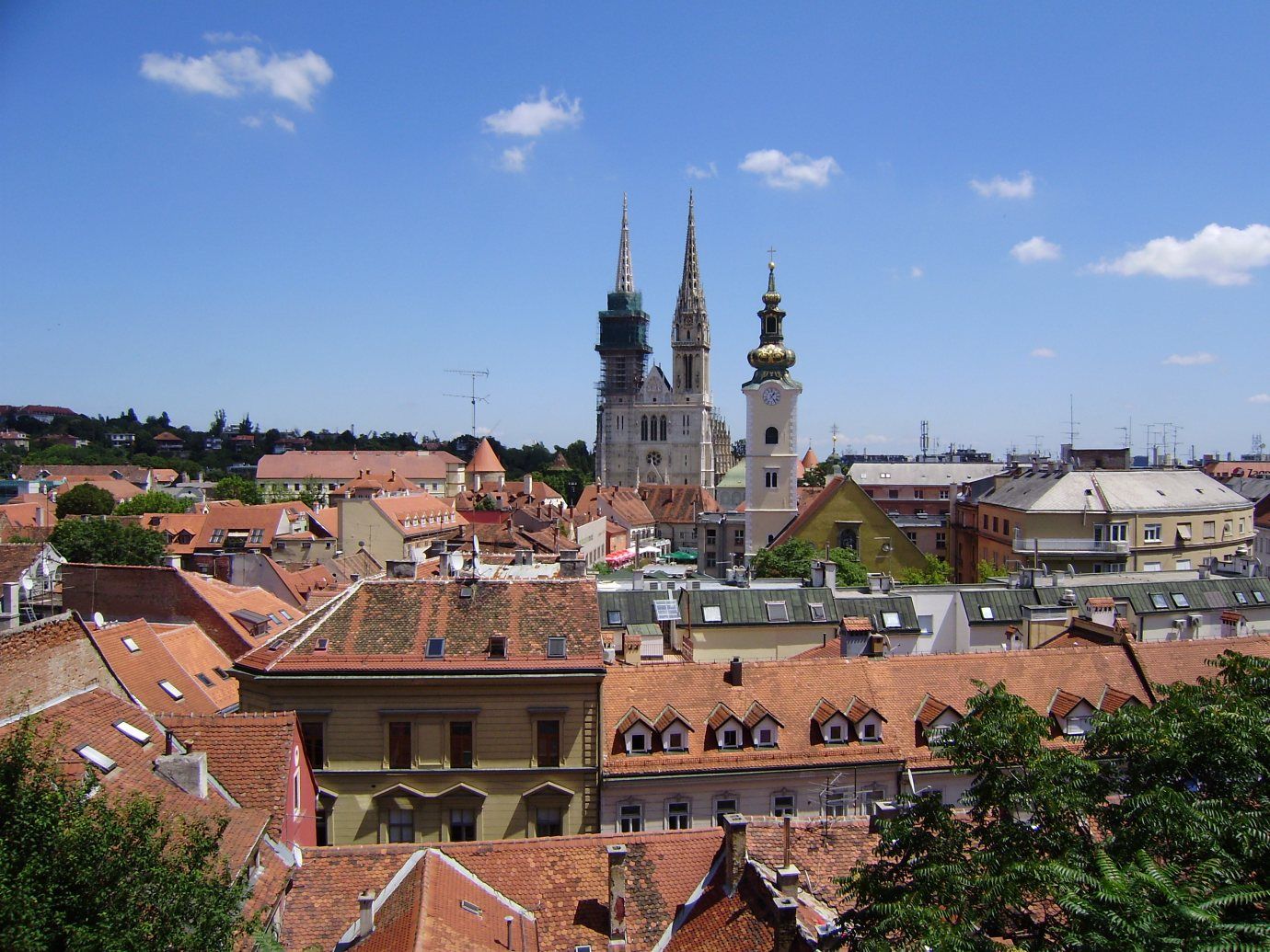
萨格勒布(克罗地亚语:Zagreb;德语旧称:Agram,阿格拉姆;匈牙利语:Zágráb),是克罗地亚的首都和札格雷布县的首府同时也是全国最大城市、一个直辖市。萨格勒布克罗地亚国内足球强队萨格勒布迪纳摩主场位于这里。萨格勒布位于海平面122m(400英尺),它位于克罗地亚的西北部的梅德韦德尼察山南坡,境内有萨瓦河流过。在2011年的正式人口普查中,萨格勒布市人口是792,875人[1]。连同萨格勒布县总人口达到了1,110,517。是克罗地亚唯一一个超过百万人口的大都市区。[2]
萨格勒布是一个有着悠久历史的城市(从古罗马时代到现在)。1094年在东部的卡普托尔主教教区内“萨格勒布”这个名称始见于史籍。在1845年扬科·卡毛夫成为萨格勒布的第一位市长。在1945年,随着人口快速的膨胀和城市的扩张,萨格勒布成为了克罗地亚的首都,从此萨格勒布开始闻名于世界。
萨格勒布在克罗地亚行政区划中有着十分特殊的地位(直辖市)。被管理细分为17个区域,它们大多是都位处低于海平面的萨瓦河山谷。
萨格勒布是克罗地亚全国、西欧和地中海和东南部欧洲的的最重要的交通枢纽。萨格勒布还有通往其他国家的国际列车。市内还有有轨电车。
Zagreb [ˈzaːgrɛb] (deutsch Agram, heute selten genutzt; ungarisch Zágráb) ist die Hauptstadt und zugleich größte Stadt Kroatiens. Die Stadt Zagreb selbst hat auch die Funktionen einer Gespanschaft. Die nähere Umgebung der Stadt bildet getrennt von dieser die Gespanschaft Zagreb, deren Verwaltungssitz auch die Stadt Zagreb ist. In Zagreb residieren ein katholischer Erzbischof, die Kroatische Akademie der Wissenschaften und Künste sowie wichtige Verwaltungs- und Militärbehörden. Als Handels- und Finanzzentrum hat die Stadt nationale und regionale Bedeutung.
Die Zagreber Kathedrale ist Sitz der katholischen Erzdiözese Zagreb.
ザグレブ(クロアチア語: Zagreb)は、クロアチアの首都。同国最大の都市である。クロアチアの北西部サヴァ川河畔に位置しメドヴェドニツァ山の南斜面にあり海抜は122mである。2011年の国勢調査による人口はザグレブ市街が686,568人、ザグレブ市域では792,875人であった。ザグレブ市と周辺の行政的に分かれているザグレブ郡の人口317,642人を合わせたザグレブ都市圏の人口は1,110,517人である。ザグレブはクロアチアでは唯一、100万人を超える都市圏を形成している。[5]
アルプスやディナルアルプス、アドリア海方向へ広がるパンノニア平原南西部の有利な地理的な条件により、中央ヨーロッパとアドリア海を結ぶ良く整備された交通回廊によって周辺地域と結ばれている。ザグレブは交通の要衝である他、産業の集積や科学研究機関、伝統的な産業などでクロアチアで先導する地位にある。また、首都としてクロアチアの中央政府や行政機関、省庁のほとんどがザグレブに拠点を置いている。
Zagreb (/ˈzɑːɡrɛb/ ZAH-greb, Croatian pronunciation: [zǎːɡreb] (![]() listen))[8] is the capital and the largest city of Croatia.[9] It is located in the northwest of the country, along the Sava river, at the southern slopes of the Medvednica mountain. Zagreb lies at an elevation of approximately 122 m (400 ft) above sea level.[10][11] The estimated population of the city in 2018 is 810,003. The population of the Zagreb urban agglomeration is about 1.1 million, approximately a quarter of the total population of Croatia.
listen))[8] is the capital and the largest city of Croatia.[9] It is located in the northwest of the country, along the Sava river, at the southern slopes of the Medvednica mountain. Zagreb lies at an elevation of approximately 122 m (400 ft) above sea level.[10][11] The estimated population of the city in 2018 is 810,003. The population of the Zagreb urban agglomeration is about 1.1 million, approximately a quarter of the total population of Croatia.
Zagreb is a city with a rich history dating from the Roman times to the present day. The oldest settlement located in the vicinity of the city was the Roman Andautonia, in today's Ščitarjevo.[12][13][14][15] The name "Zagreb" is recorded in 1134, in reference to the foundation of the settlement at Kaptol in 1094. Zagreb became a free royal town in 1242.[16][17][18][19][20] In 1851 Zagreb had its first mayor,[21][22][23][24] Janko Kamauf.
Zagreb has a special status in the Croatia's administrative division and is a consolidated city-county (but separated from Zagreb County),[25][26][27][28] and is administratively subdivided into 17 city districts.[29][30][31] Most of them are at a low elevation along the river Sava valley, whereas northern and northeastern city districts, such as Podsljeme[32][33][34] and Sesvete[35][36][37] districts are situated in the foothills of the Medvednica mountain,[38] making the city's geographical image rather diverse. The city extends over 30 kilometres (19 miles) east-west and around 20 kilometres (12 miles) north-south.[39][40]
The transport connections, concentration of industry, scientific, and research institutions and industrial tradition underlie its leading economic position in Croatia.[41][42][43] Zagreb is the seat of the central government, administrative bodies, and almost all government ministries.[44][45][46] Almost all of the largest Croatian companies, media, and scientific institutions have their headquarters in the city. Zagreb is the most important transport hub in Croatia where Central Europe, the Mediterranean and Southeast Europe meet, making the Zagreb area the centre of the road, rail and air networks of Croatia. It is a city known for its diverse economy, high quality of living, museums, sporting, and entertainment events. Its main branches of economy are high-tech industries and the service sector.
Zagreb (prononcé en croate : /ˈzɑːgrɛb/ ; hongrois : Zágráb ; italien : Zagabria ; anciennement nommée en allemand : Agram) est une ville et un comitat (« ville de Zagreb »), capitale de la Croatie. Au recensement de 2011, la ville comptait 688 163 habitants, le comitat 790 017 habitants, dont 93,14 % de Croates5 et la région de Zagreb (le comitat « ville de Zagreb » plus le comitat de Zagreb) comptait 1 107 623 habitants.
Zagreb est située au nord du pays sur les flancs de la Medvednica à côté de la Save à une altitude d'environ 122 m au-dessus du niveau de la mer. Sa situation géographique favorable dans le Sud-Ouest de la plaine de Pannonie qui s'étend des Alpes aux Alpes dinariques et à la mer Adriatique la place sur les axes de communication entre l'Europe centrale et la mer Adriatique.
Les interconnexions de transports, la concentration des industries, de la recherche scientifique et industrielle font de Zagreb le centre économique de la Croatie. Zagreb est également le siège du gouvernement, des corps administratifs et de presque tous les ministères.
Zagabria (in croato Zagreb, pronuncia [ˈzɑːgrɛb]; in tedesco, ai tempi dell'Impero austro-ungarico, Agram; in ungherese Zágráb) è la capitale e la maggiore città della Croazia, con i suoi 809 832 abitanti. Il centro cittadino costituisce una delle regioni della Croazia, mentre l'area geografica intorno alla città fa parte di un'altra unità amministrativa, la Regione di Zagabria.
Zagabria è sede degli organi centrali dello Stato (il Parlamento, il Presidente della Repubblica, il Governo ed il Primo ministro, la Corte Costituzionale, la Corte Suprema) e praticamente di tutti i ministeri. È anche sede universitaria (Università di Zagabria, Università Cattolica Croata, Università Internazionale Libertas, alte scuole, politecnici) e arcivescovile metropolitana (l'arcidiocesi di Zagabria con diocesi suffraganee a Varasdino, Sisak, Bjelovar-Križevci e l'eparchia greco-cattolica a Križevci di rito bizantino).
Zagreb (![]() [ˈzǎːɡreb] (?·i)) es la capital y ciudad más poblada de Croacia. Está localizada al noroeste del país, entre el río Sava y la ladera sur del monte Medvednica, a unos 122 metros sobre el nivel del mar. Dentro de su término municipal residen más de 890 000 habitantes en 2018, lo que la convierte en la cuarta ciudad más grande de Europa Sudoriental y en la segunda por extensión. Si se tienen en cuenta las poblaciones limítrofes, la cifra del área metropolitana asciende a 1 100 000 personas empadronadas.
[ˈzǎːɡreb] (?·i)) es la capital y ciudad más poblada de Croacia. Está localizada al noroeste del país, entre el río Sava y la ladera sur del monte Medvednica, a unos 122 metros sobre el nivel del mar. Dentro de su término municipal residen más de 890 000 habitantes en 2018, lo que la convierte en la cuarta ciudad más grande de Europa Sudoriental y en la segunda por extensión. Si se tienen en cuenta las poblaciones limítrofes, la cifra del área metropolitana asciende a 1 100 000 personas empadronadas.
La zona sobre la que se asienta Zagreb está habitada desde el Imperio romano. El yacimiento más antiguo que se ha localizado es la ciudad romana de Andautonia, situada a 10 km de la actual capital. El término «Zagreb» fue registrado por primera vez en 1134 para referirse a la archidiócesis de Zagreb, fundada en 1094,5 si bien durante siglos hubo dos pueblos distintos: Gradec —con bula de oro desde 1242— y Kaptol, donde se hallaba la catedral. Ambas localidades se fusionaron en 1851 por orden del ban Josip Jelačić para formar la ciudad actual.5
A diferencia de otras localidades del país, Zagreb tiene un estatus especial como «ciudad-condado», independiente del condado de Zagreb. A nivel administrativo está dividida en 17 distritos; la mayoría se encuentran en las zonas bajas cercanas al río Sava, mientras que los barrios del noroeste se sitúan a los pies del monte Medvednica. Su extensión total es de 30 km de este a oeste, y de 20 km de norte a sur.
En calidad de capital de Croacia, Zagreb alberga la sede del gobierno central, de las administraciones públicas y de casi todos los ministerios. La actividad económica concentra la mayoría de la industria, las sedes empresariales y los centros de investigación, con un sistema especializado en tecnologías de la información y en el sector servicios. Es asimismo el principal centro de comunicaciones de Croacia por tierra y aire, siendo un punto clave en la encrucijada entre Europa Central, el Adriático y el resto de la península balcánica. Dispone de una amplia oferta de eventos culturales y deportivos.
За́греб (хорв. Zagreb [ˈzâːɡrɛb]), Аграм (нем. Agram) — столица и крупнейший город Хорватии. Население — 790 017 человек (2011), площадь — 641,29 км². Город расположен на реке Саве, притоке Дуная, на 45,815° северной широты и 15,98306° восточной долготы, на высоте 104 метров над уровнем моря (низшая точка) рядом с горным массивом Медведница. Загреб основан более 900 лет назад.
Город Загреб с пригородами имеет статус отдельной жупании в составе Хорватии, руководство городом осуществляет мэр, избираемый городской ассамблеей. 31 мая 2009 года мэром города на четвёртый срок (третий подряд) был избран Милан Бандич[1].
Загреб находится в зоне континентального климата. Средняя летняя температура составляет +21 градус по Цельсию, средняя зимняя температура +2 градуса по Цельсию. Время — среднеевропейское, GMT+1.

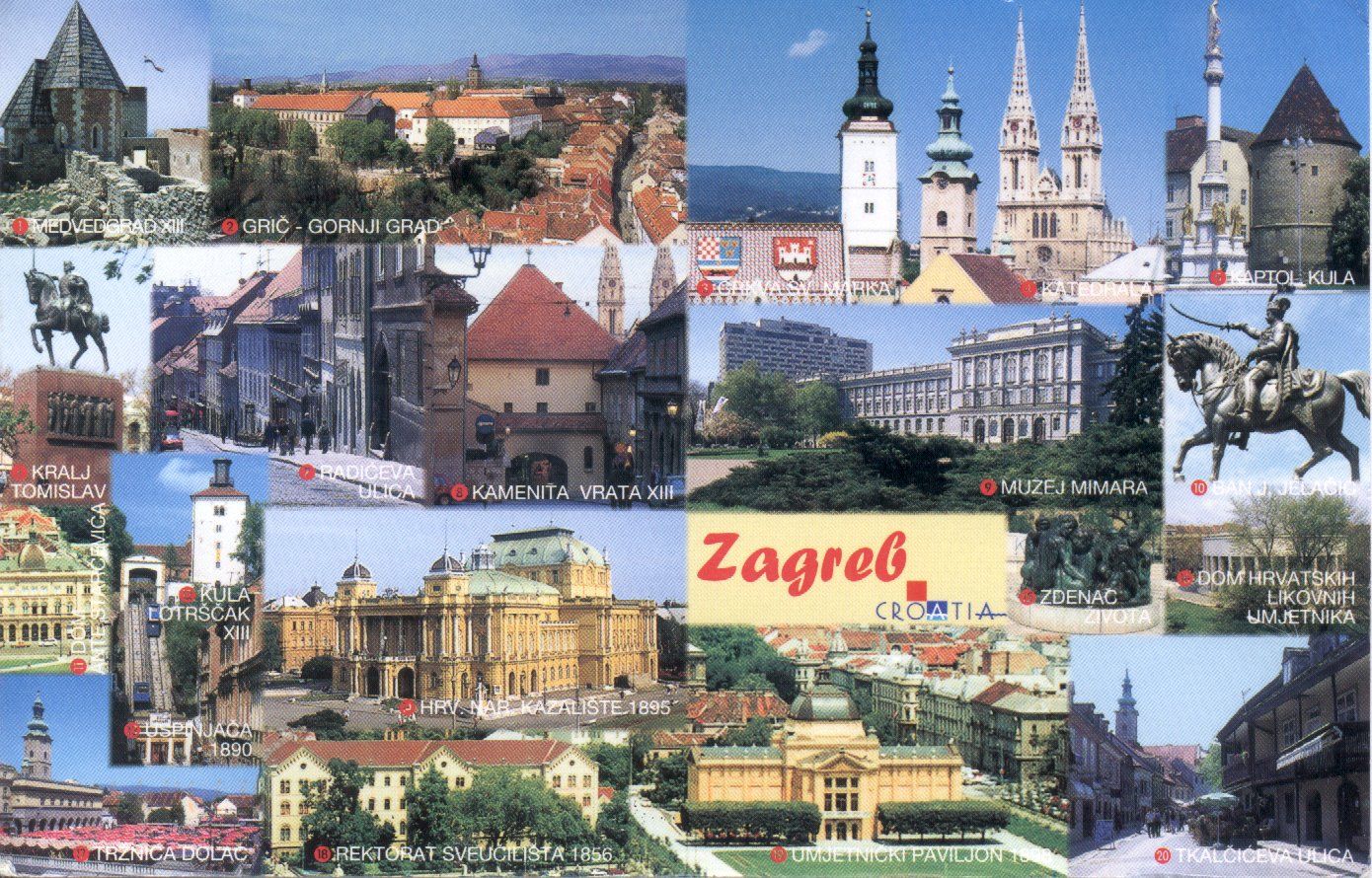
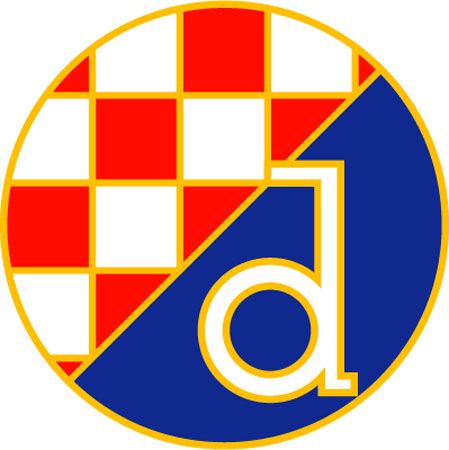
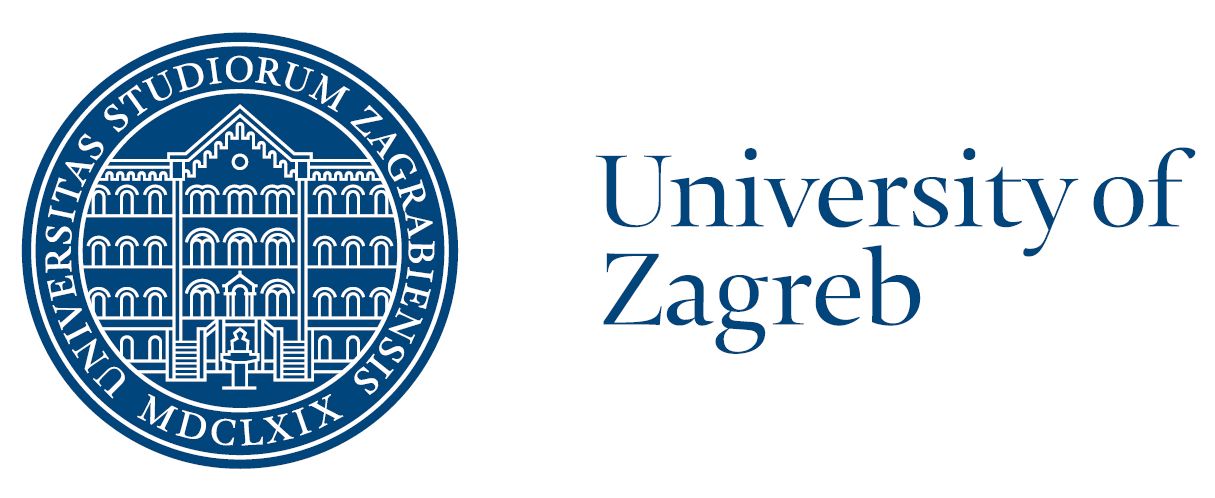




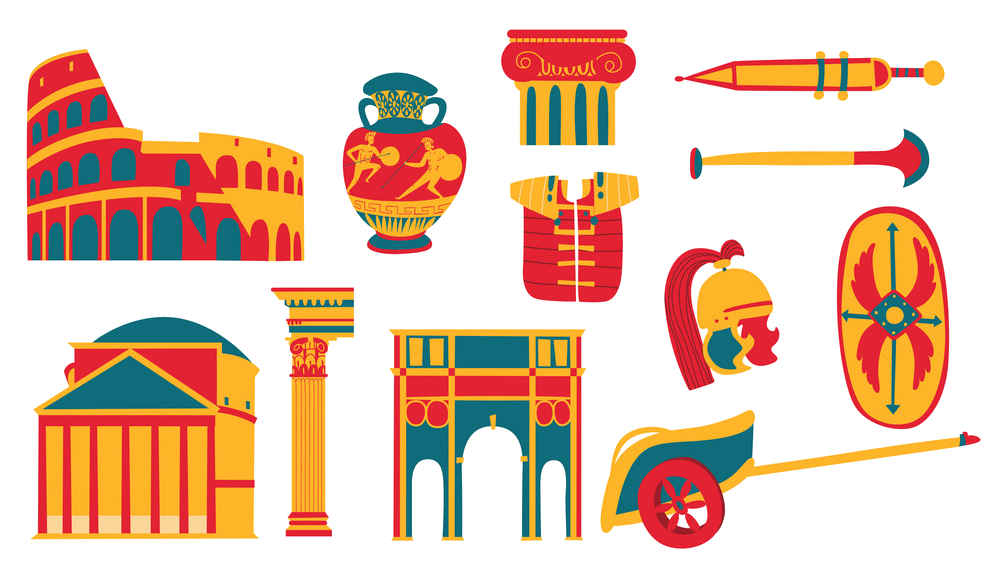 Cities founded by the Romans
Cities founded by the Romans



